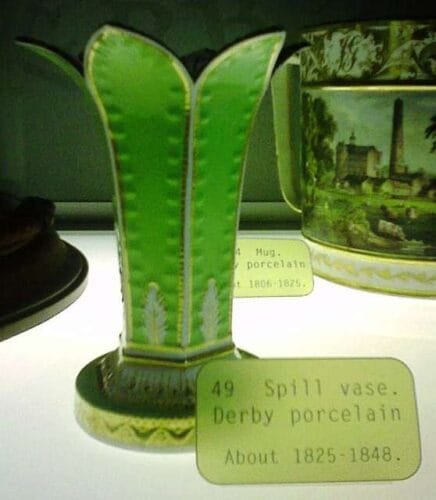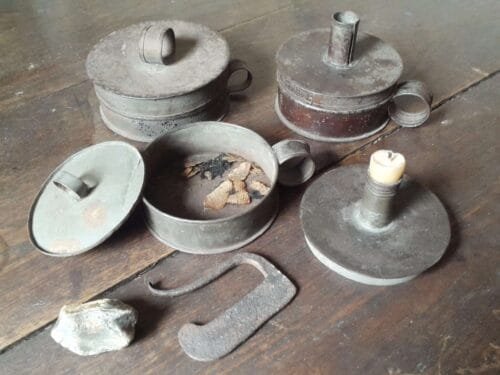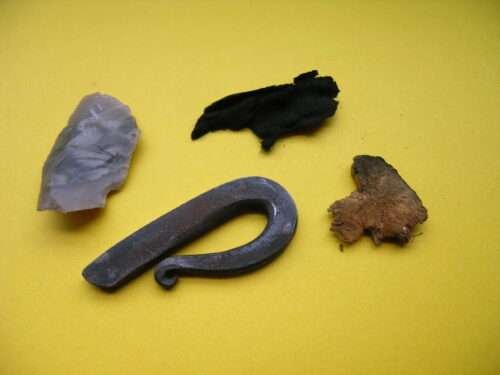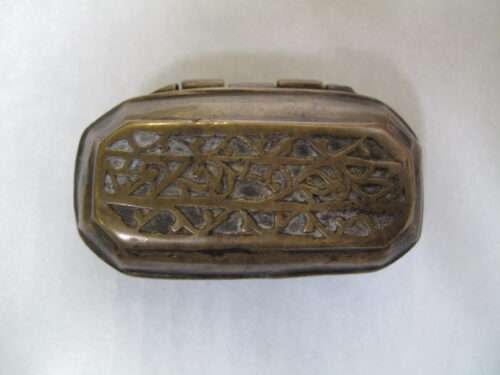Before there were matches…
Fire is one of those things that we take for granted today. With matches, and lighters, and electronic ignitions for gas appliances, fire seems readily available. But friction matches were not invented until 1827, when chemist John Walker accidently struck a wooden splint dipped in fire-lighting mixture on his stone hearth. Though he sold them locally, and several others improved upon his initial design, friction matches did not become widely available until the Victorian Era.


Sulfur matches, thin strips of wood tipped with sulfur, existed from the Middle Ages in Europe, and even longer elsewhere. But these early matches were not used to create fire. They were used to transfer fire from one place to another. Vases with these matches, also called spunks or spills, were often kept in decorative vases on fireplace mantles to light candles or fires in other rooms.
The issue of fire, and the light it provides was a real issue in making the dragon tunnels in Jane Austen’s Dragons usable by warm-blooded folk. The answer to the problem came in the form of tinder boxes or fire kits.
In the Home

In addition to spill vases, a tinderbox was kept on many mantlepieces to provide ready means to start a fire.
Commonly made of tin, tinderboxes could also be made of steel, brass, or even silver. Often circular, they featured tight fitting lids to keep the all-important tinder inside dry. Without dry tinder, the rest of the contents would be largely useless.
In the 1800, most home tinderboxes had a socket for a candle in the lid, and a loop on the side allowing the tinderbox to double as a candle holder. This was the sort of tinderbox I envisioned being kept with the supply of torches at the entry points to dragon tunnels and lairs.
Contents of a Tinder box
Although the form could vary according to the individual tinderbox, the basic contents were largely universal. A flint nodule with a steel striker would provide a spark. A steel damper upon which to set the tinder and to put it out once it had served its purpose fit tightly in the bottom of the box. Sulfur matches allowed relatively easy transfer of the flame.

Tinder
A tinder box’s tinder was small bits of material that would readily catch fire from a spark. What served as tinder?
During the Regency Era the favored tinder was scorched linen. Usually salvaged scraps from well used articles repurposed for other uses, it would be held in a flame, allowed to catch fire, then dropped in a tinderbox and extinguished with the metal damper. Tinder would have to be regularly replenished.
Hemp, feathers, dried leaves, grass, and wood shavings could also serve as tinder. A dried fungus know as ‘horse’s hoof fungus’ could be sliced thin, dried, and soaked in saltpeter for used as tinder. In the country, touch-paper, small bits of paper prepared like the horse’s hoof fungus, was often carried as tinder.
Using a tinderbox
To use a tinder box, first, everything needed to be removed from the box, except the tinder. The fire-starter would hold the steel in their dominant hand and the flint in the other, over the tinderbox. The steel would be struck against the flint, in hopes of showering sparks onto the tinder below.
The process could be rather hit or miss. Practice and skill were required to get the sparks on the tinder and not elsewhere. Once sparks landed on the tinder, a few soft breaths would encourage a flame to grow.
At this point the sulfur matches would be applied to the tinder. See how to make and use them here:
Once the match ignited, it could be used to light a candle or start the tinder of an already laid fire. Once the match was ignited, though, the tinder from the box would be put out with the damper, to preserve the valuable resource. Finally, all the materials would be returned to the box, making it ready for future use.
On the Go

Travelers and country men often needed access to fire away from home. Small, often decorative, tinder boxes were available, without the candle-holding feature. If a man regularly carried a knife, just a bit of flint and touch-paper in one’s pocket would provide the fire-starting essentials.
Now imagine doing all of that in the dark, or in bad weather. Tell me what you think in the comments.
References
Benson, Laurie and Sarah Murden. From a Spark to a flame. All things Georgian. November 8, 2016. Accessed August 4, 2024. https://georgianera.wordpress.com/2016/11/08/guest-post-by-laurie-benson-from-a-spark-to-a-flame/
Kane, Kathryn. The Matchless Regency. The Regency Redingote. January 2, 2009. Accessed August 5, 2024 https://regencyredingote.wordpress.com/2009/01/02/the-matchless-regency/
Kane, Kathryn. The Tinderbox—The primary Regency Fire Source. The Regency Redingote. January 9, 2009. Accessed August 5, 2024. https://regencyredingote.wordpress.com/2009/01/09/the-tinderbox-the-primary-regency-fire-source/
Warfield, Caroline. Spills and Fire Starters. Caroline Warfield. October 25, 2018. Accessed August 5, 2024. https://www.carolinewarfield.com/2018/10/spills-and-fire-starters/

I imagine everyone being cold for awhile was pretty normal! Especially if the kit got wet from rain, or too much Wind. I had an Electrical Failure last week in my Basement & it filled my Apt with Sickening Smoke & melted machine smell. Those events always remind me of how Delicate Modern Technology is, one mishap & the whole home can go back to the Dark Ages until the problem is fixed!
Given that I have trouble lighting flimsy paper matches from a matchbook (it’s a flinch response that doesn’t apply to the sturdier wooden matches), I might have had a hard time using a flint and steel to start a fire, even indoors, much less outdoors or in the rain! However, that was probably a skill children were expected to learn and failure to do so would have been harsh by today’s standards, so I would probably have gotten over it. Cold (even indoors) and fear of the darkness would have provided an added incentive!